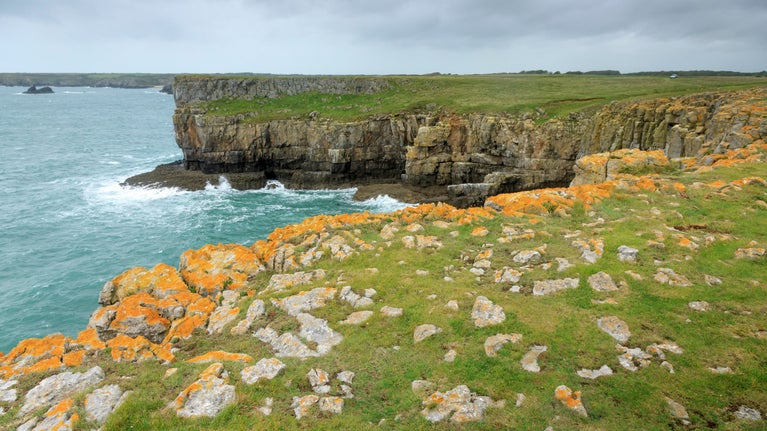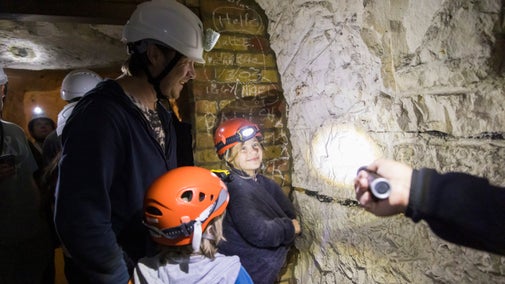
Coast
From the sounds of our shores to our tips for rock pooling, get closer to the coast.

Hunting for fossils is a great way to explore the coastline and have family fun in the fresh air. Discover some commonly found fossils in the UK – from ammonites to devil’s toenails. Find out what they look like, and where you might spot them on your next trip to the coast.
The ammonite (pictured top) was a tentacled sea creature that lived between 66 and 400 million years ago, similar to today’s nautilus but more closely related to octopuses and squid.
All that we see now is its fossilised curled shell, which was divided into sections. The creature lived in the newest, largest sections, sealing off old segments of the shell as it grew and using them to control buoyancy by filling them with gas – similar to how a submarine works.
You tend to find these fossils in marine sedimentary rock, which has built up in layers underwater. A great place to see them is the Dorset coast, where there are ammonites ranging from a few millimetres to over half a metre in size.
Although the curved shells of these fossils look like the claw of an ancient animal or devil-like creature, they were created from oysters that once lived on shallow seabeds.
They’re between 66 and 200 million years old, relics of a time when the sea covered what’s now land in Britain. Gryphaea can be found along many beaches, but are particularly common on the Yorkshire coast.

Often dinosaur bones are washed up in the sand, including around the Isle of Wight. These tend to be eroded by the waves and often look like pebbles. Look out for the tell-tale signs of aerated holes, which look similar to bubbles in a bath sponge or cake.

Sea urchins have been around for 450 million years, and are still going strong. Along with the sponges that once lived in similar conditions across underwater Britain, they make fairly common fossils, although only the hard parts of their bodies are preserved for us to see.
Once place you can find fossilised sea sponges and sea urchins is Blakeney National Nature Reserve, Norfolk. Look through the shingle carefully for washed-up remains.

Walking along our beaches you may be lucky enough to discover a fossilised shark’s tooth from an ancient species dating back some 50 million years.
As a shark feeds, its teeth can become dislodged or trapped in its prey. This doesn't matter to the shark, as it has a constant supply of replacement teeth growing from its jaw.
This means that over millions of years, vast numbers of shark teeth have sunk to the bottom of ancient oceans, been buried by sediments and fossilised. You’ll often find them washed up along beaches in Essex and Kent.
Fossil hunting is great fun, but needs a lot of patience. The best place to look for fossils is always along beaches rather than in cliffs. Keep well away from the base of cliffs and be careful not to get cut off by rising tides.
Please also collect responsibly, so that other people can continue to see and enjoy fossils on the beach, and check if there are local rules about removing fossils.

From the sounds of our shores to our tips for rock pooling, get closer to the coast.
Fossils can be found anywhere, but you can often find them on beaches where they've been washed out of nearby cliffs. Discover some of the best coastal spots we look after where you might find a fossil or two.

Search for clues to the life of animals and plants from the past. Our guide contains dinosaur facts and reveals the best places to go fossil and bone hunting, one of our ‘50 things to do before you’re 11¾’.

Go fossil hunting and discover history on a gigantic scale, with dinosaur footprints, fossilised oyster shells, ammonites, flint made from ancient sponges and modern-day shipwrecks

We worked with the British Library and the National Trust for Scotland to create the UK’s first ever coastal sound map. Find out about the project and top tips for making your own recording of the sounds of our shores.
